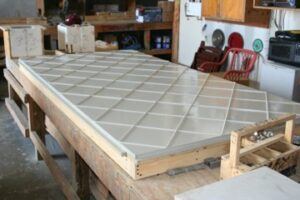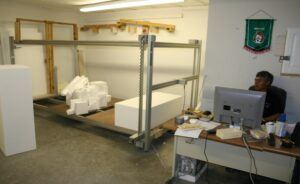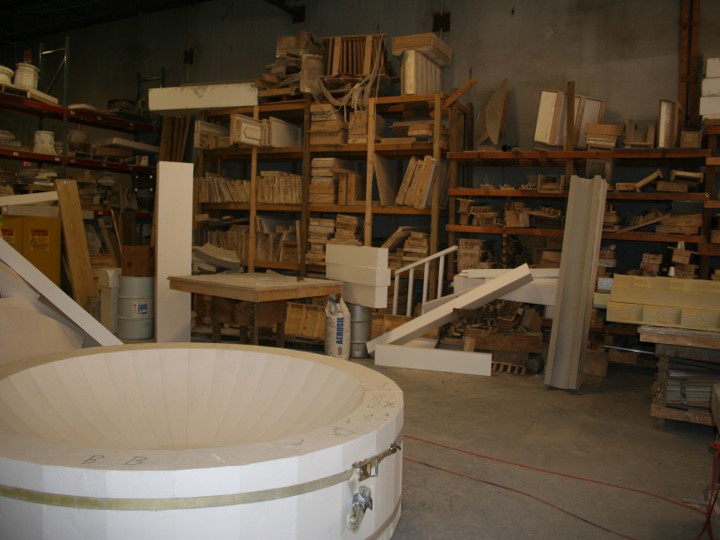Custom Cast Stone, What Does This Mean?
If you’re venturing into the world of architecture and design, you’re going to encounter a term that piques your curiosity: Custom cast stone. This isn’t just about selecting a prefabricated piece; it’s about creating something that’s uniquely tailored to your project needs. Custom cast stone is typically any product that can’t be picked off the shelf. It requires a mould to be either specially made or significantly altered to accommodate a specific order. When one of the key points of using cast stone is to have the pieces fit together without cutting or modifications, it’s another reason this term abounds.
This post contains affiliate links. If you make a purchase through these links, I may earn a commission at no extra cost to you.
As an Amazon Associate, I earn from qualifying purchases
Custom Cast Stone And The Breadth Of The Term.
You’re going to find out about the breadth of products that can be classified as custom-cast stone. Think larger than the basics. This can range from ornamental elements such as decorative veneers or intricately carved mantels all the way to complex assemblies with custom ornate architectural columns and specialized building façades.
I’m going to show you the kinds of customization that can transform a standard item into a custom piece. Sometimes, a customer might need a product from a manufacturer’s portfolio.
But with a twist—perhaps a slightly different size or detail. Or they might want something altogether novel that harmonizes with the surrounding design elements of a new construction or renovation.

Custom Cast Stone Color And Finishes.
Now, it’s important to talk about colour because it plays a crucial role in custom cast stone products. Creating a custom colour isn’t just a matter of working with pigments; it’s also about the effects that darker colours can have on the moulds themselves, reducing their lifespan.
And the cleaning of the molds before being used for other colours, does potentially cause increasing costs. And there’s more—custom finishes with aggregates or other materials, can add texture and visual interest. But also complexity to the manufacturing process. and therefore additional costs.

The Complexities of Custom Cast Stone Production
Creating custom cast stone isn’t just as simple as tweaking a design and pushing a button. It’s a meticulous process that demands precision and patience.
To start with the necessity of making bespoke moulds or altering existing ones. This is a complex and time-consuming process with most requests.
Every order that deviates from the standard requires a fresh look at the mould. Sometimes, it’s not just about resizing. It could be about incorporating a client’s unique stylings, or features. Or that any radiuses are of a different size, meaning that they aren’t in the standard product portfolio.
So Many Different Windows & Other Elements.
Think about it, there are so many different-sized windows and doors with palladium tops, add the vast amount of different profiles that architects specify and then you can understand how the term is used so frequently.
Nearly every window with any form of radius requires a custom mold, one of the most challenging of these would be a radius-topped window, that is in a rotunda stairwell, a piece that requires to be formed with 2 radii on different planes. And I have not come across many builders or shell contractors who can build this to accurate dimensions.

Custom Cast Stone & The First Stage Of A Complex New Mold
After the specifications are nailed down, the real work begins. Crafting a visual and functional replica of the desired item is crucial.
This typically involves the creation of an exact model or prototype for the more complex pieces like capitals or corbels. This allows for the production mold or molds to be made from the model or prototype.
Once the molds are completed full-scale production kicks in. Plus, a prototype ensures that the end product is up to scratch, meeting both aesthetics and can be stored if for any reason another mould is needed.
Analysing Costs.
Let’s look into the costs, as the financial aspect can’t be ignored. Custom pieces pack a punch to the budget. Molds can’t just be whipped up—they’re investments. Each new design contributes to rising manufacturing costs, and storage, which can quickly inflate the final bill for a project.
When dealing with darker colours or finishes that demand a unique aggregate mix, moulds wear out faster, and need aggressive cleaning and conditioning in many cases, which means they need to be replaced more often, adding to the cost.
Custom Silicone or Rubber Molds.
Silicone or RTV molds carry the biggest increase or a column shaft mold and that is only regarding standard-type pieces. We were involved in some spectacular projects where we asked to make 20 ft diameter fountain bowels and other unique pieces, that had to be specially transported and lifted into their final position with cranes. Admittedly it’s probably a little easier to understand the extra costs involved with something like that.
General Custom Costs In The Process.
Now, all this paints a pretty challenging picture, but that’s not the end of it. Custom orders don’t just affect the casting process, the additional costs begin in the office and run through the whole process,
with shop drawings, into the mold shop and/or model, then to production, then to shipping and packing and on to installation costs. So what may seem an expensive add-on, has a lot of tasks involved to be included in the extra cost.
Custom Cast Stone And It’s Work Summary.
So, what’s the key takeaway here? Custom cast stone production is an intricate dance that requires managing a complex choreography of design, manufacturing, and financial factors. But well-orchestrated, it results in truly unique and beautiful outcomes—something that truly belongs to the client, made precisely to their vision. And that is why, despite the complexities, the demand for custom-cast stone solutions continues to bloom throughout the industry.

Balancing Cost and Complexity in Custom Stone Projects
Custom cast stone projects do bring a range of complexities, but with careful planning, these can be effectively managed. If you’re considering such a project, it’s crucial to think about the balance between the uniqueness of the piece and the associated costs.
When it comes to amortizing mould costs, the key is volume. Producing several pieces from a single new mold if the lead time allows, dilutes the initial investment across the number of pieces, making each item more cost-effective. Choosing something that fits for you is very important, but also makes economic sense if you’re ordering multiple items.
When a complicated new piece is brought into production for the first time, mistakes can be made and additional time and materials are wasted. Adjustments are made in our approach, but starting with a well-thought-out design minimizes this potential waste.
Valued Engineering.
Also, transparency in the manufacturing process can help you understand where costs come from, and it might even spark ideas for cost-saving adjustments known in the industry as “valued engineering”.

Custom Cast Stone & Production Runs.
Complex orders and pieces can mean complex production schedules. the non-standard larger pieces and take more time to prepare and pour, And yes, this can also lead to increased labour costs for equipment cleaning and materials switching but you should not concern yourself with this process, just be aware of where the costs arise. Most manufacturers are well-versed in these challenges and plan for them accordingly.
Conclusion
I really hope that you feel more confident now, heading into your cast stone project, even if it involves custom work. Remember, every unique architectural element you create is a testament to your vision and design, and the craftsmanship of the manufacturers. While balancing cost against complexity may seem daunting at first, the end result is often worth the investment. So, are you ready to bring your bespoke vision to life? Let’s make those custom dreams a reality.
Contact Us
We hope you find the information useful, but if you have any questions or need help, send us a message. You do have to sign in and confirm these days to comply with government rules. Sorry for the inconvenience.
Author Rob

